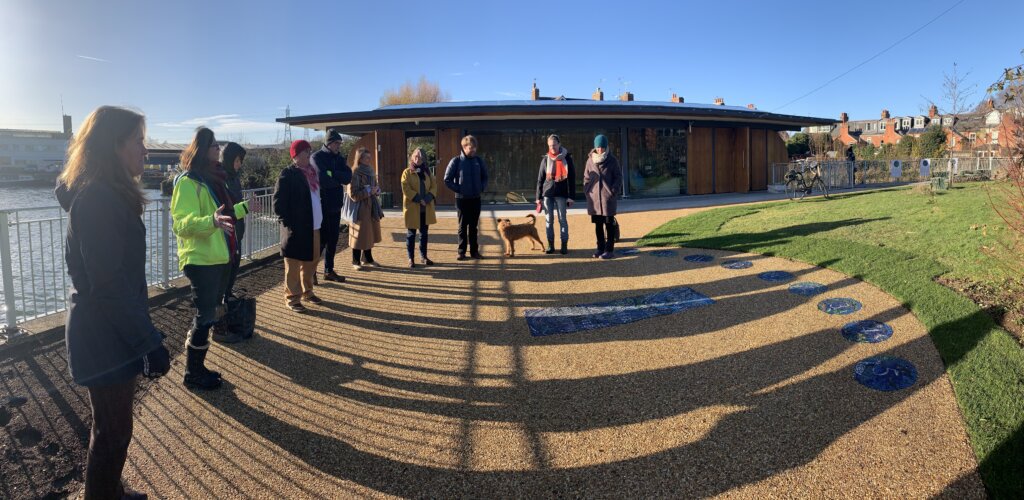Improving accessibility and on-site engagement at Osney Lock Hydro
Osney Lock Hydro and West Oxford Community Renewables were each awarded a small grant of £500 to go towards landscaping the existing site surrounding Osney Lock Hydro.
The city of Oxford has a deep bond with the entwining River Thames and tributaries and it’s wonderful to see the community of West Oxford working with the elements to transform the natural resources of the river at Osney Lock into the first community-owned hydro scheme to be built on the Thames. The site is one of only three areas suitable for hydro generation in the city and features an Archimedean screw hydropower system. The amount of electricity produced depends on the amount of rainfall and the flow of the river but the 49kw hydro has been generating clean electricity since 2015.
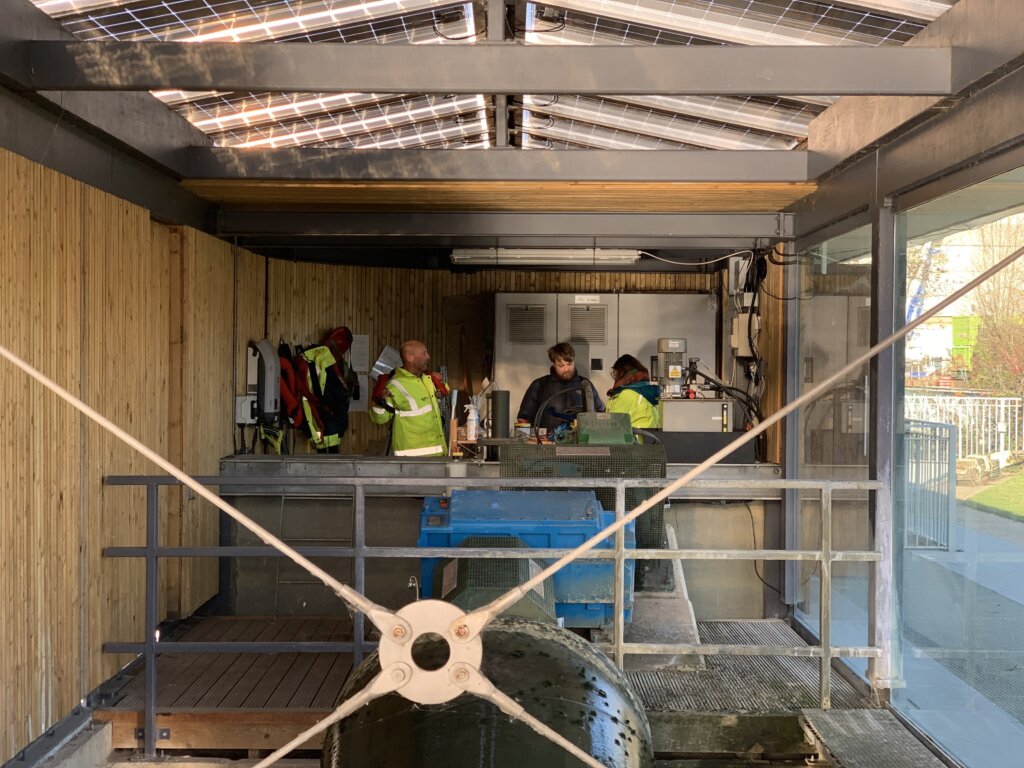
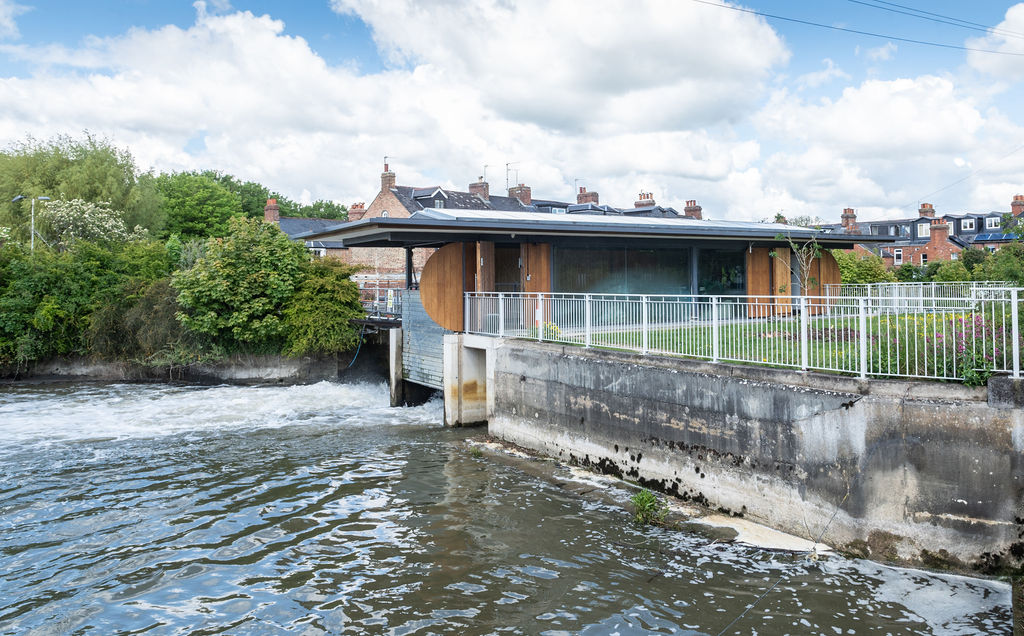
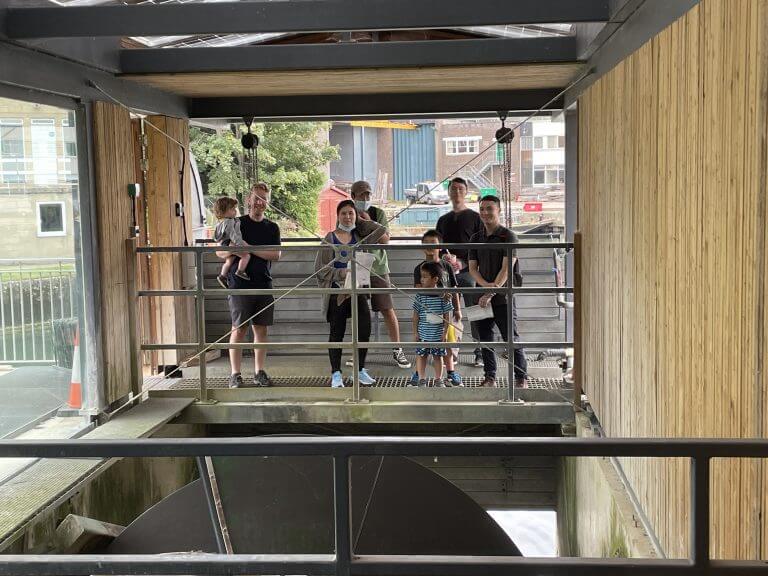
Osney Lock Hydro and West Oxford Community Renewables were each awarded a small grant of £500 from the Low Carbon Hub’s Community Grant Fund, towards landscaping the site surrounding Osney Lock Hydro. The aim of the grant project was to increase accessibility and open the site up to the community and general public, so that more people will be able to experience the thrill of seeing the Hydro in action for themselves. Access to the site has so far been by appointment with a small team of volunteers providing guided tours.
All Low Carbon CIC Community Shareholder Member groups can apply for a small grant of £500 in any financial year and groups can apply singly or join forces for the same project. Our aim is to award as many of the small grants as possible, so long as the applications meets the criteria and sufficient funds are available in the pot.
Osney Lock Hydro is an enthralling and innovative project that attracts visitors from all over the world. It is particularly fascinating for schools and enables young people to witness and imagine the exciting possibility of a future powered by renewable energy. The site is just downstream from Oxford’s first coal fired electricity station, which helps students and visitors to experience the stark contrast between energy produced from fossil fuels and energy generated from a renewable source. Learning about the project at first hand helps to make the shift to a local, decentralised energy system more tangible and achievable.
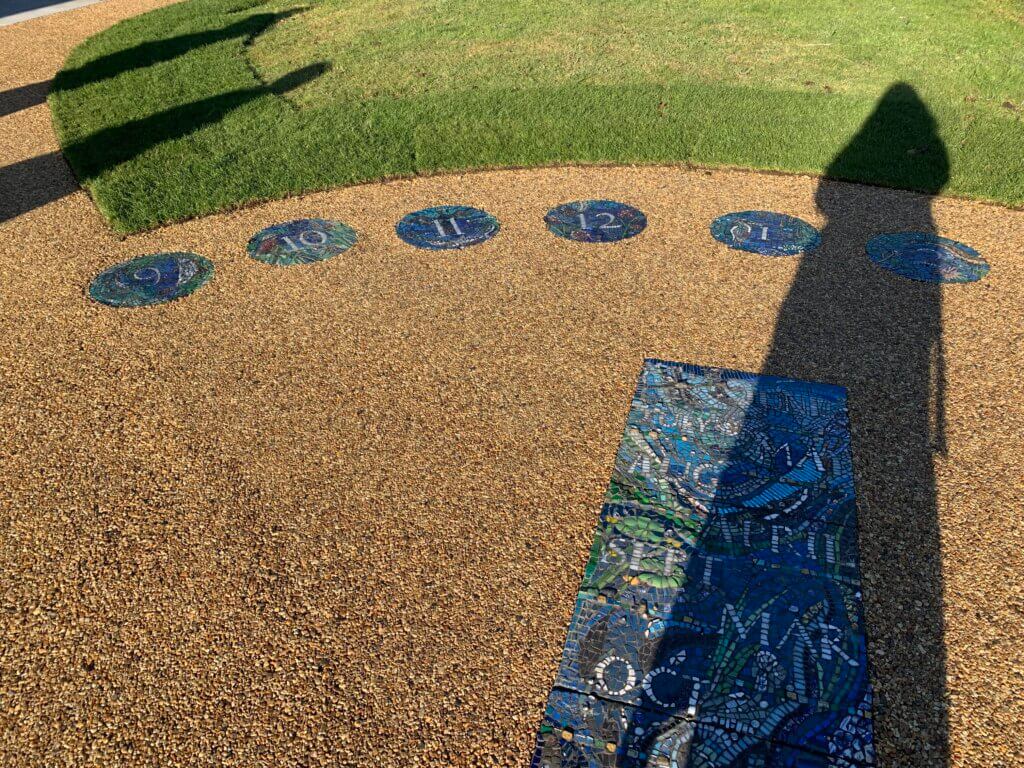
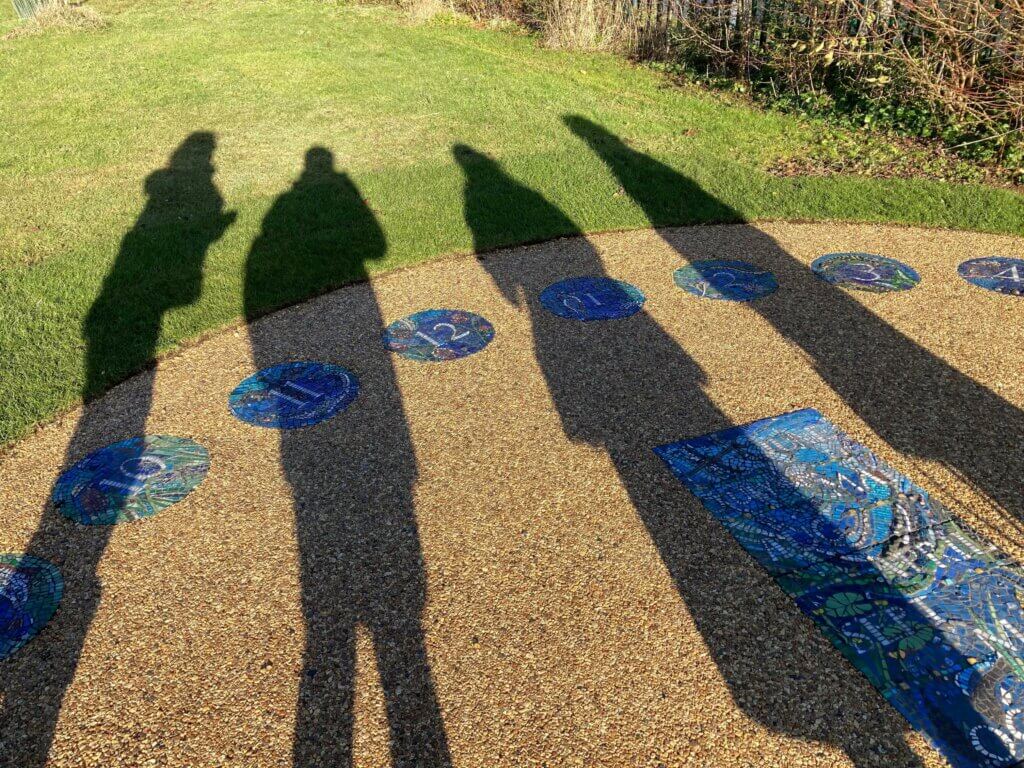
The restrictions brought in by the Covid 19 pandemic meant that progress with the hard landscaping and access improvements were delayed and the project took longer than expected with some increased costs. The directors of Osney Lock Hydro moved quickly when their chosen contractors had availability at short notice and the work was completed by the close of 2021.
Improving access to the site will have the beneficial effect that visits will no longer need to be by appointment and will enable many more people to see the project. Once fully open, the number of visitors to the site is expected to increase significantly from 800 to several thousand, along with at least five additional primary school visits in the next year.
In order to engage visitors and young people the directors of Osney Lock Hydro decided to commission local mosaic artist, Josie Webber, to work with the community to create a mosaic ‘human sundial’. The hard landscaping, completed with the help of the Low Carbon Hub small grants, enabled the human sundial to be successfully installed. The sundial is a striking way to explore the connections between humans and nature and the project was made possible by a Heritage Lottery grant. Josie is a talented and experienced mosaic artist with several existing commissions in Oxford. She was keen to share her skills with the community and welcomed their involvement and contribution to the project.
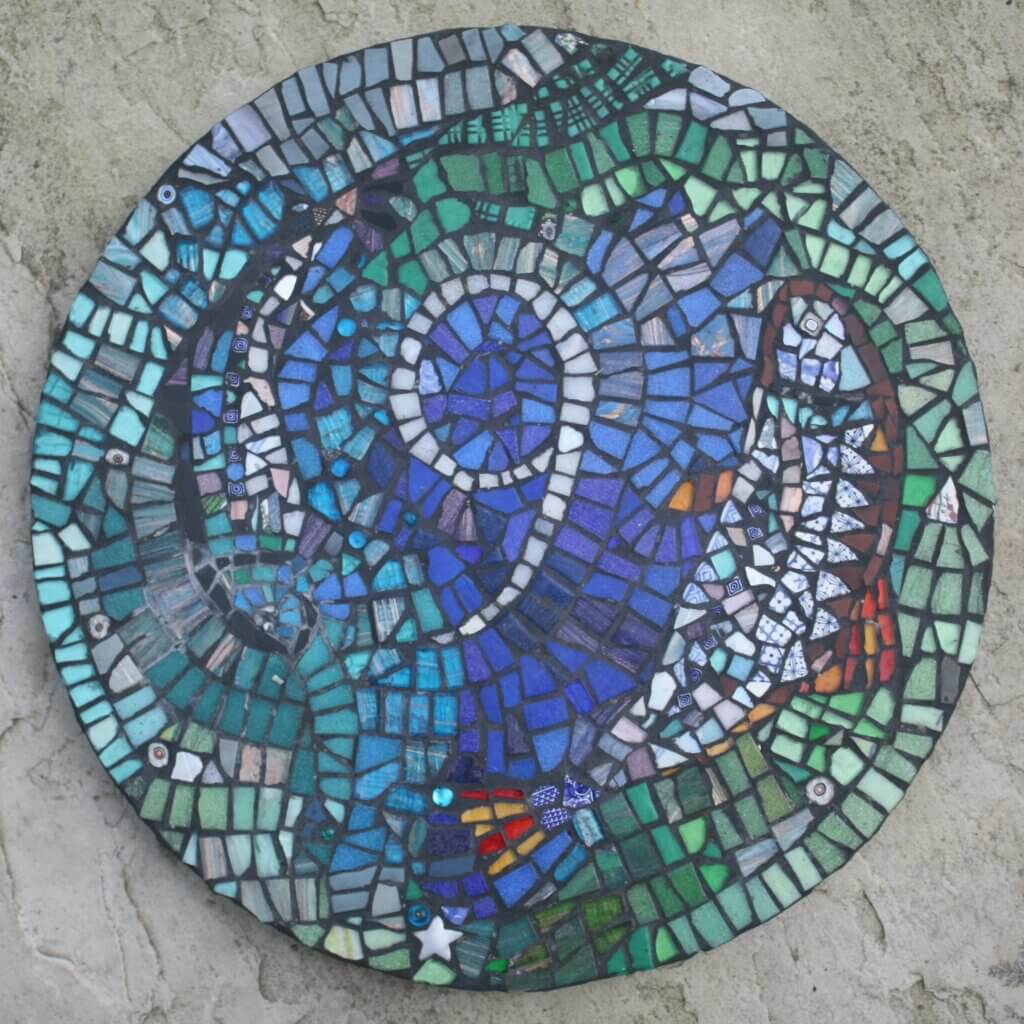
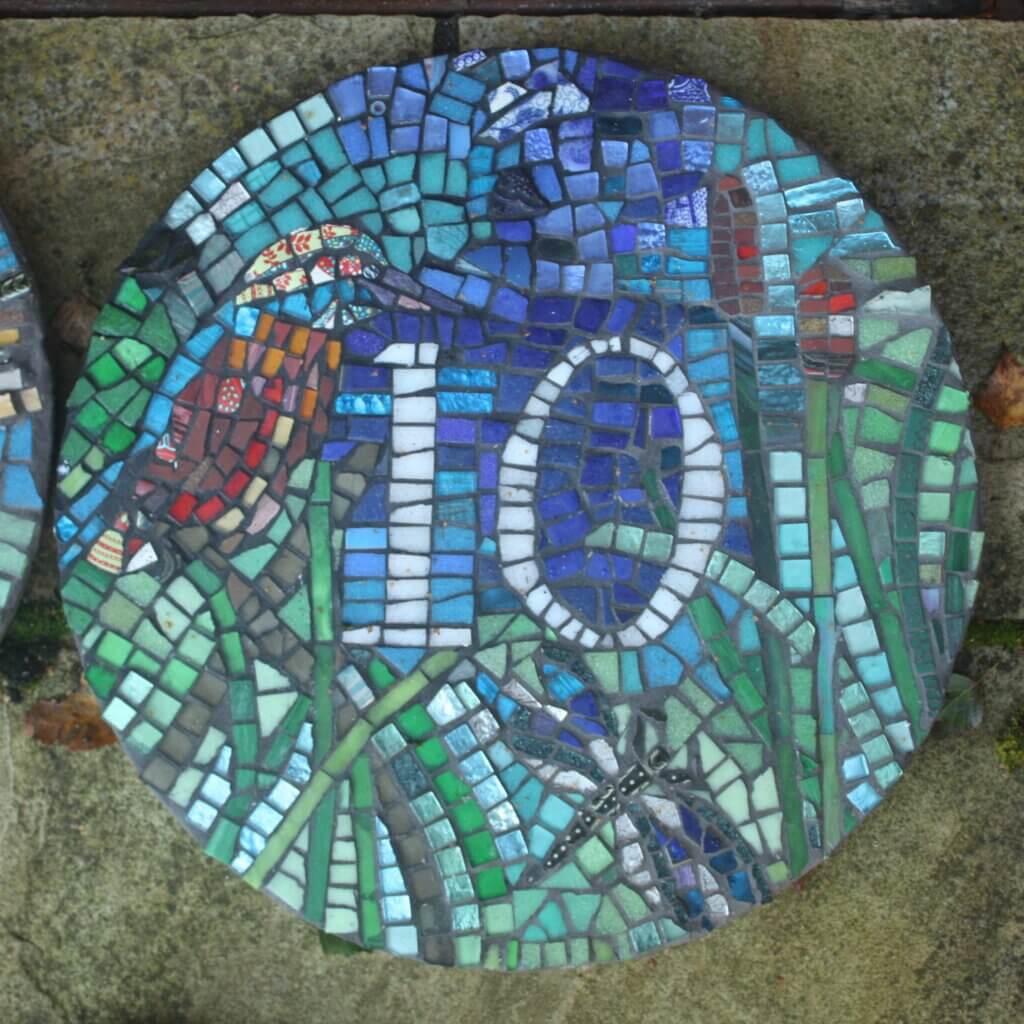
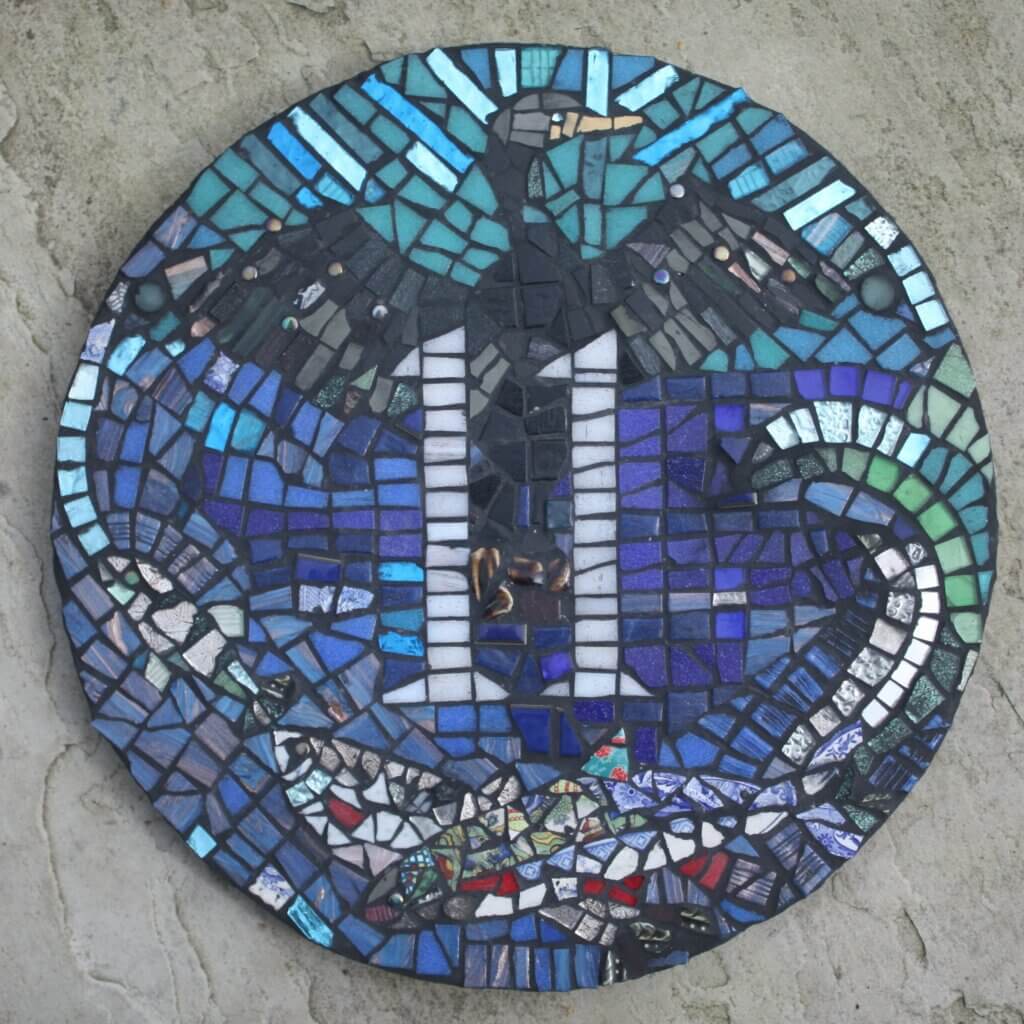
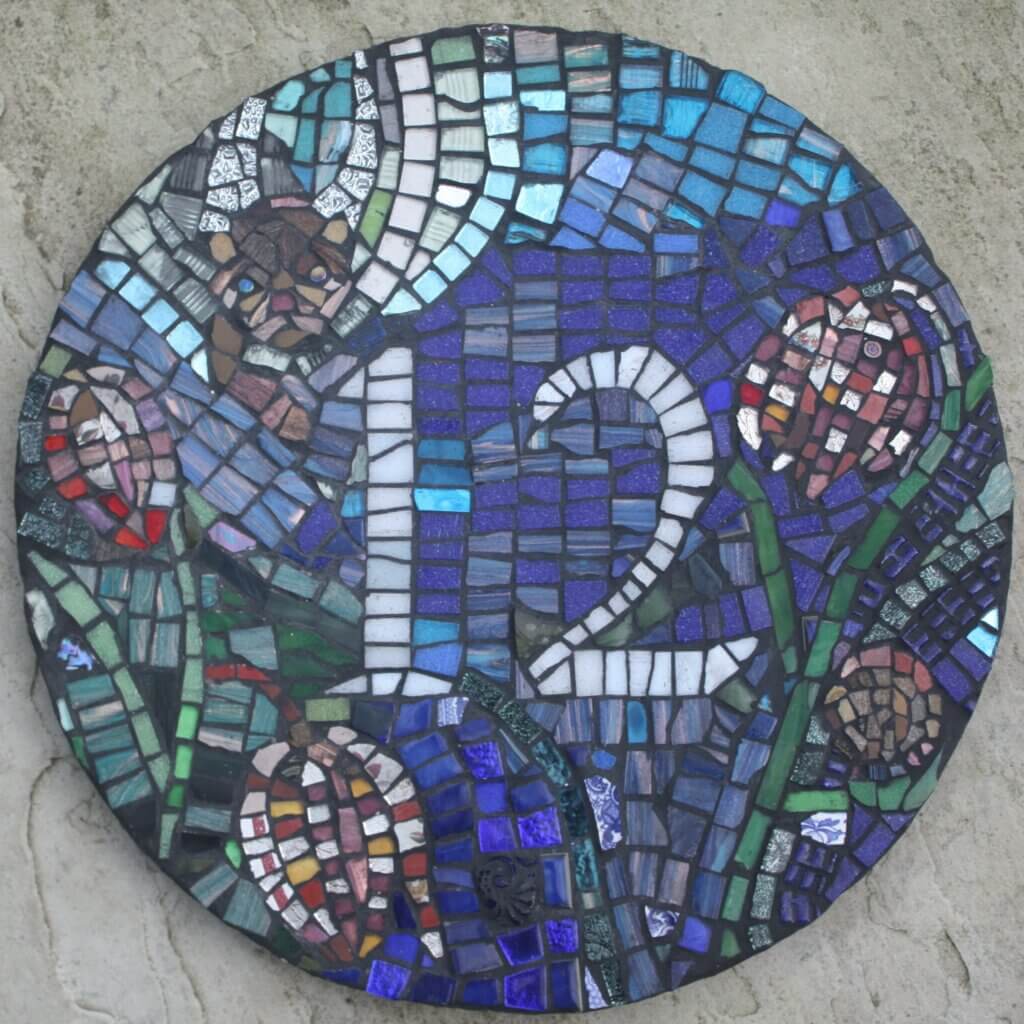
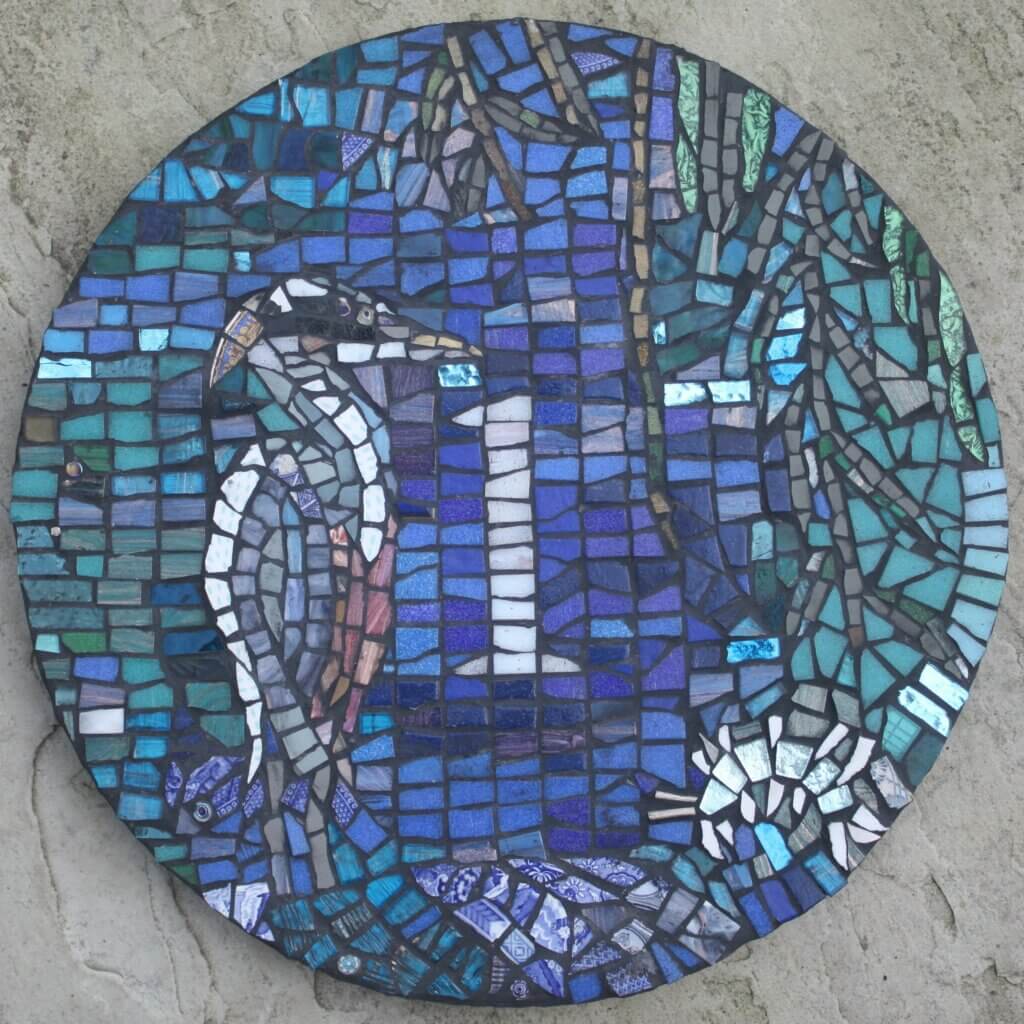
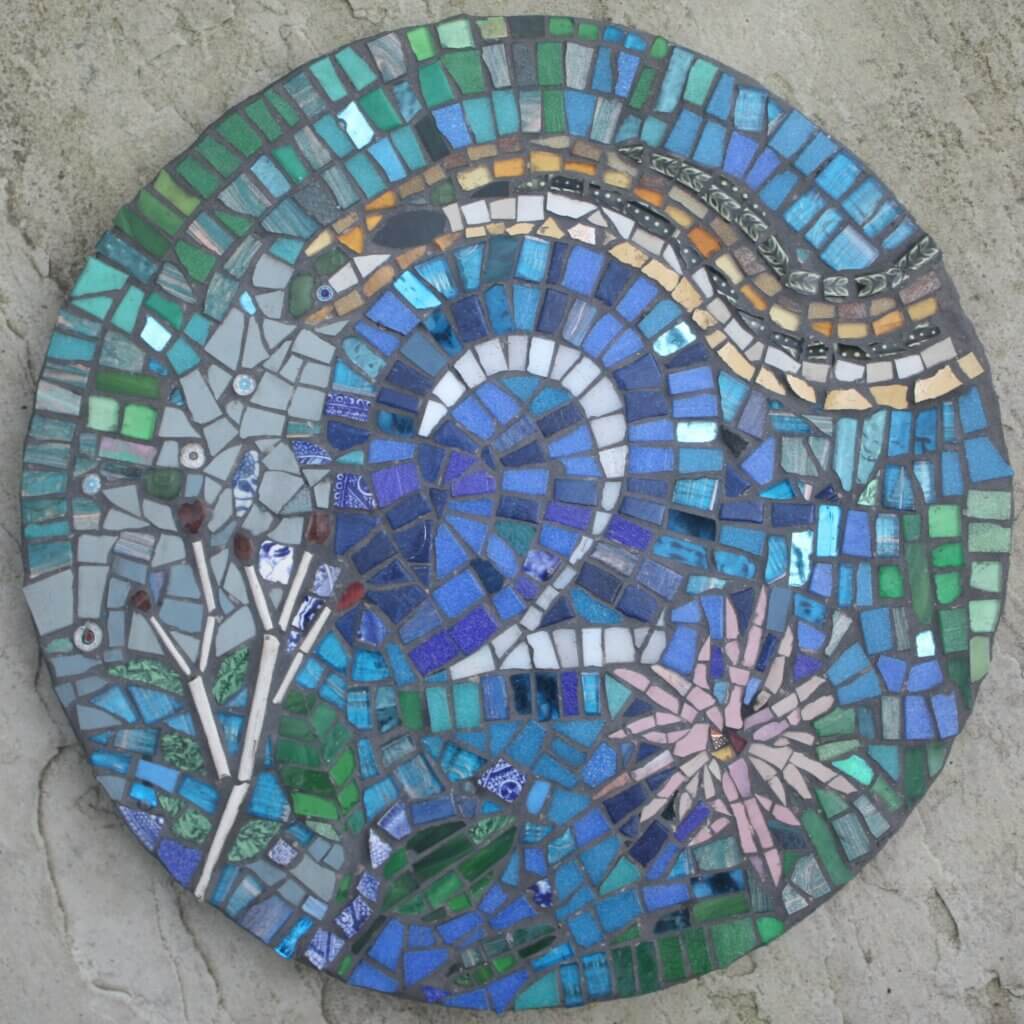
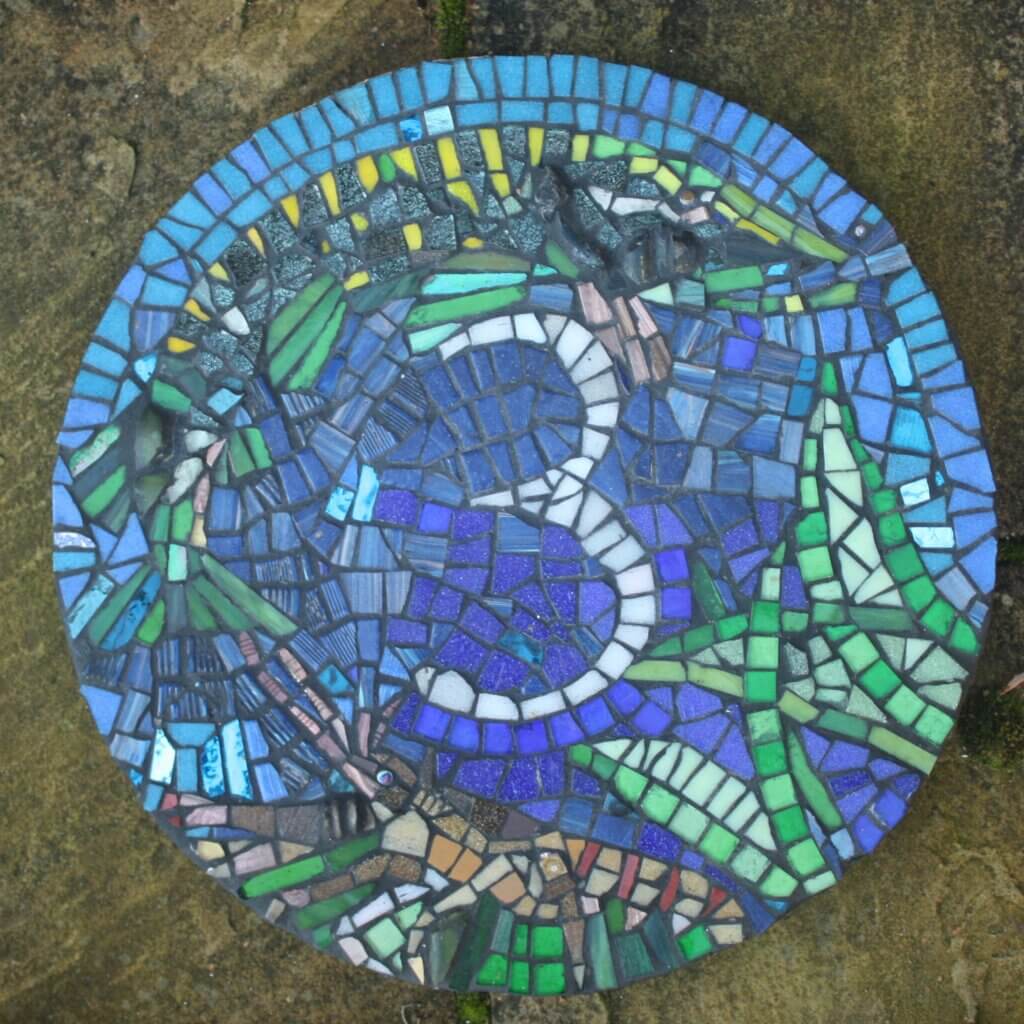
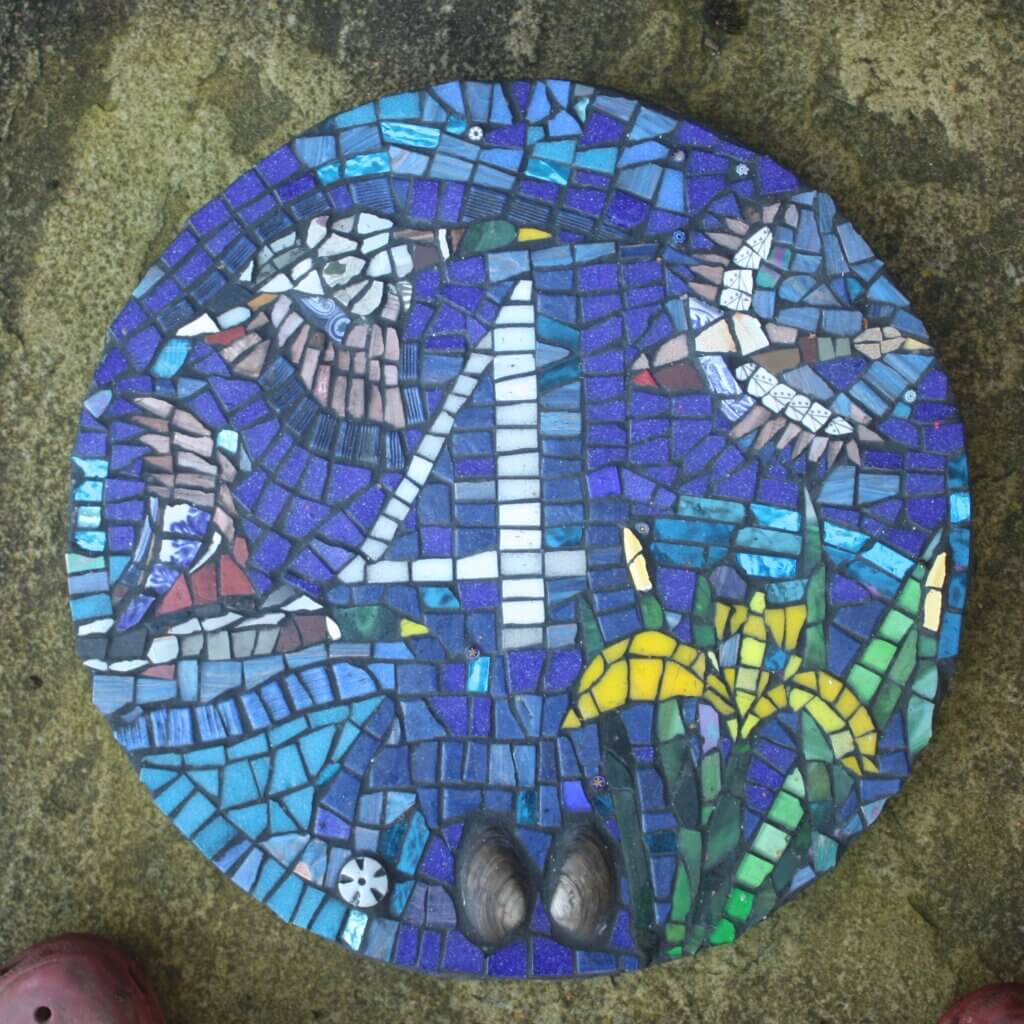
Members of Low Carbon West Oxford were instrumental in engaging the wider community in the design of the human sundial by featuring species of local flora and fauna that were chosen and voted for by local residents. They also approached local fishermen, conservationists and the Osney Lock Keepers for their suggestions which formed part of the final designs. The most popular images included kingfishers, herons and dragonflies.
Involving the community in this project has made it much more meaningful. It may have meant that our final design was more crowded as we wanted to include the most popular choices, but it definitely made the project a positive experience for me, and hopefully for all those involved.
Josie weber, local mosaic artist
The local community also responded enthusiastically to a call-out from Josie for donations of fragments of pottery, china and glass that could be added to the mosaic time pieces. Hundreds of pieces were dug up and donated from people’s gardens and Josie was able to incorporate remnants of old glass bottles and cracked china into the details of the pike and heron images.
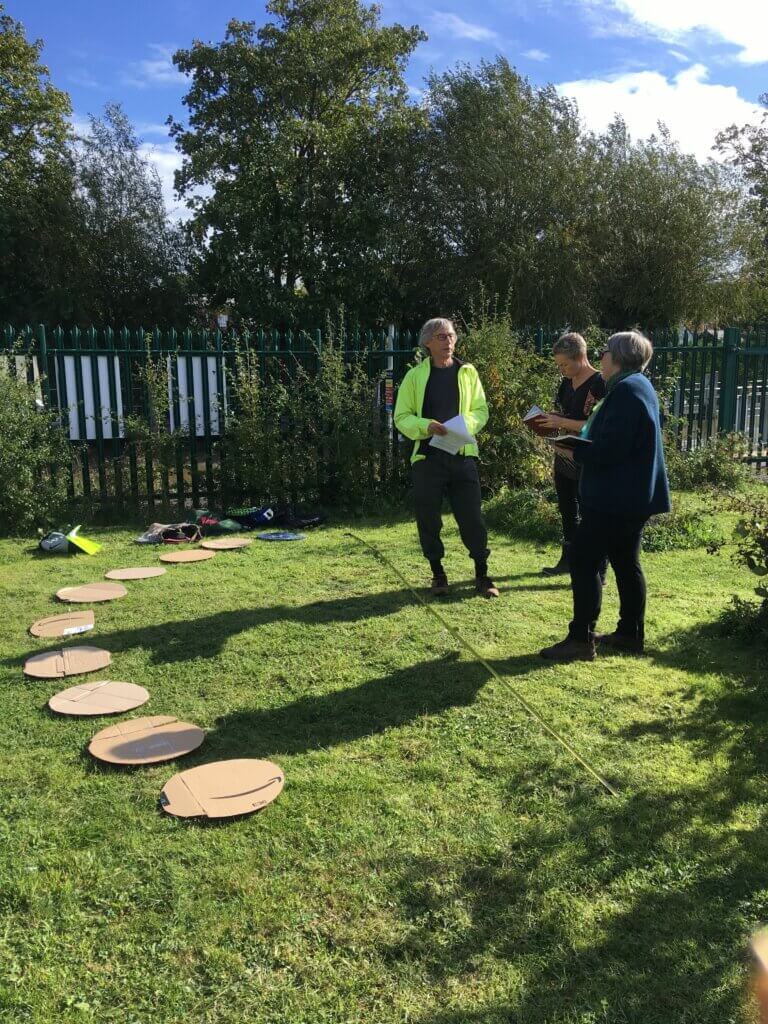
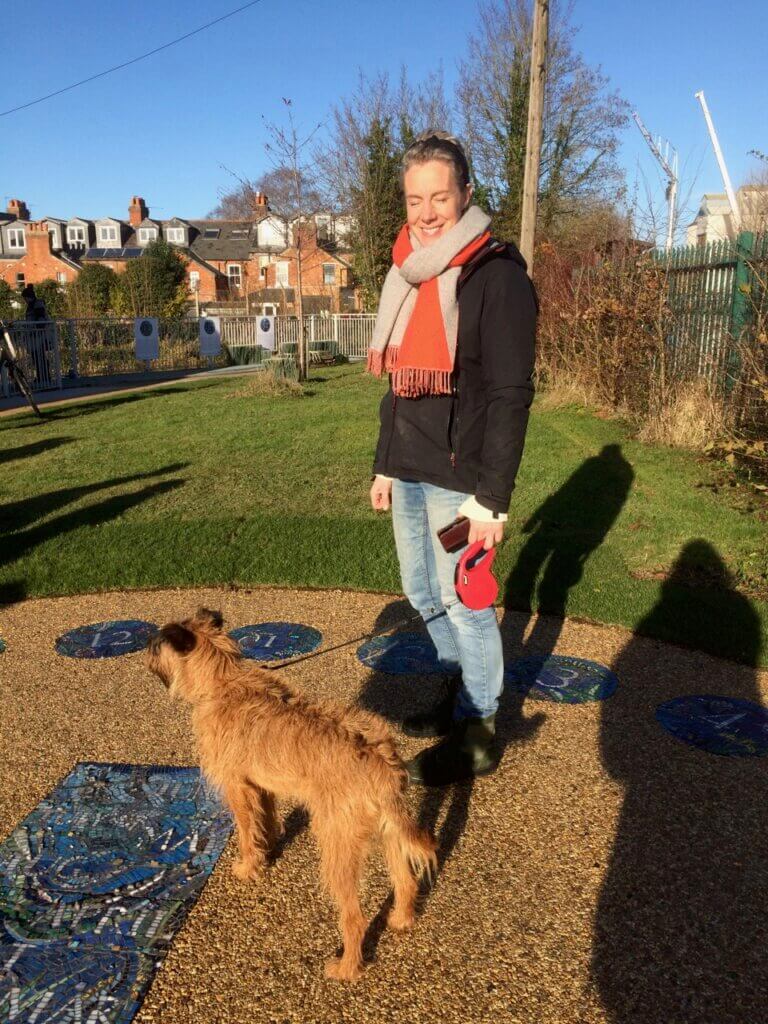
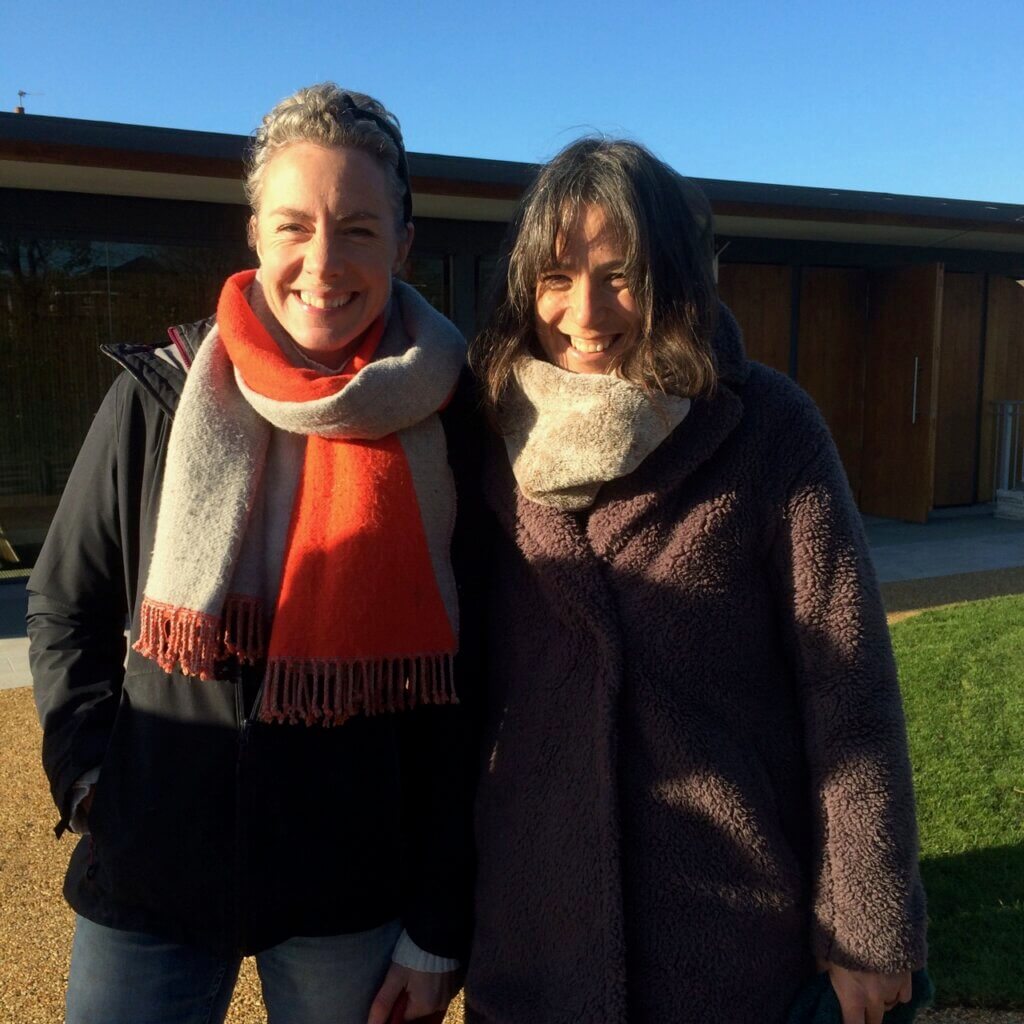
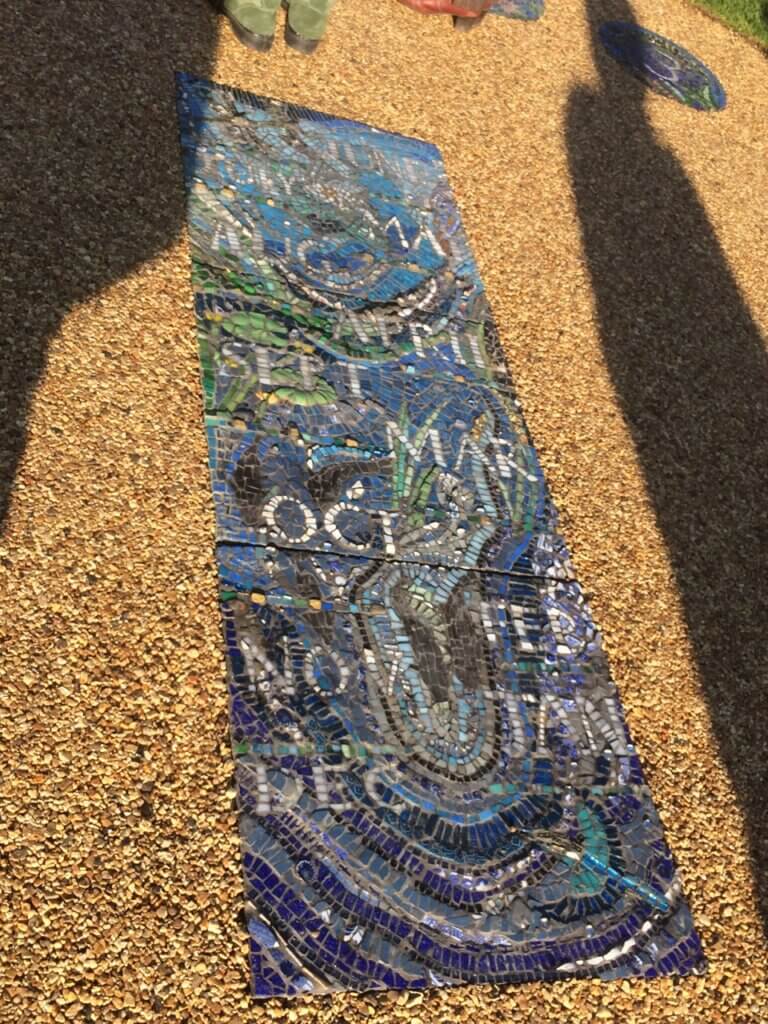
The renewable energy generation capacity of Osney Lock Hydro has been boosted by the installation of a 7.75kwp solar PV array on the roof of the building which generates an additional 6.665 kwh’s of green electricity. Taking inspiration from this, the image of the sun has been incorporated into the design of the human sundial by a member of the community who worked closely with Josie.
The placing of the sundial and hour pieces on the ground needed to be exact to enable the shadows to fall in the right place, and in a further example of community involvement, a local mathematician provided expertise and guidance to ensure that everything aligned correctly. The overall result is a fantastic and imaginative way to encourage people to connect with their environment and explore ways to create renewable energy that makes the most of local natural resources.
The sundial and landscaping was officially unveiled on 4 December and staff from Low Carbon Hub were amongst some of the first visitors to the rejuvenated site.
After so many months of planning, it has been wonderful to be able to see the sundial in situ, and share it with the first of what we hope will be many visitors. As well as symbolising the way it is possible for people and nature to to-exist in harmony, the sun dial is also a testament to the what can be achieved through the power of collaboration. I would like to thank the many people and organisations who supported the project both financially and creatively. Each time I look at the sundial I find another plant or animal hidden in its beautiful design. I hope future visitors will get as much delight from the beautiful mosaic work as I do.
Saskya Huggins, Director, Osney Lock Hydro
case study written by Cathy Ryan, Community Engagement Manager
Could your community save money on energy and cut carbon emissions?
If you have any questions about saving energy or developing your own community-owned renewable energy project, we’re here to help via our Helpdesk.
Find out more about our Low Carbon Hub community groups.
